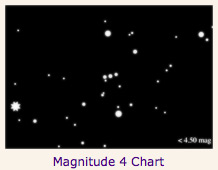[I made an error below, I had originally written that Orion was the target constellation, but it’s in fact Leo and Crux. I have updated this page.]
 As I recently wrote, light pollution is a real problem. Wasted light from ground illumination goes into the sky, washing out the stars. But just how bad is it?
As I recently wrote, light pollution is a real problem. Wasted light from ground illumination goes into the sky, washing out the stars. But just how bad is it?
GLOBE at Night wants to find out. This is an international citizen-science project, trying to map the sky illumination over the entire populated planet. And they need your help!
 It’s actually pretty easy. All you have to do is go outside and find Leo (if you are in the northern hemisphere) or Crux (if you’re in the southern). Then look at the stars and try to figure out the faintest ones you can see. Compare that to a GLOBE at Night star magnitude chart and then report your results.
It’s actually pretty easy. All you have to do is go outside and find Leo (if you are in the northern hemisphere) or Crux (if you’re in the southern). Then look at the stars and try to figure out the faintest ones you can see. Compare that to a GLOBE at Night star magnitude chart and then report your results.
That last link is actually designed to work with phones, too, so you can do this while on the go.
I like this project a lot. It’s simple, easy to do, and using Leo/Crux is smart: they’re both easily recognizable constellations. And the beauty of this project is that it has two outcomes. One is that it shows people just how bad the skies are getting, which is important. But it also simultaneously gets people to do one of my favorite activities of all time: looking up.
And if you’re a teacher, this is a great learning opportunity for your students, too!
GLOBE at Night is running two campaigns, time periods they want people to go out and do this: from March 22 (today) to April 4 in the northern hemisphere, and from March 24 to April 6 in the southern. So go outside and start observing!